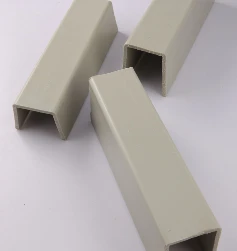Гру . 04, 2024 16:00 Back to list
Benefits of Using HDPE Cutting Boards for Kitchen Safety and Durability
The Versatility and Benefits of HDPE Cutting Boards
When it comes to kitchen essentials, a cutting board is a fundamental tool used by chefs and home cooks alike. Among the various materials available, High-Density Polyethylene (HDPE) has gained popularity, especially for its durability, safety, and ease of maintenance. In this article, we will explore the advantages of HDPE cutting boards and why they are an excellent choice for your culinary endeavors.
What is HDPE?
High-Density Polyethylene (HDPE) is a thermoplastic polymer made from petroleum. Known for its high strength-to-density ratio, HDPE is commonly used in a variety of applications, including plastic bottles, piping, and, of course, cutting boards. One of the primary reasons HDPE is favored in kitchen environments is its non-porous nature, which prevents bacteria and food particles from being trapped within the surface.
Key Benefits of HDPE Cutting Boards
1. Durability HDPE cutting boards are remarkably strong and resistant to impact. Unlike wooden boards that may warp or crack over time, HDPE boards maintain their shape and surface quality, even with regular use. This durability makes them a long-lasting kitchen investment.
2. Hygiene One of the standout features of HDPE cutting boards is their hygienic properties. Since the material is non-porous, it does not retain stains or odors. This makes it less likely for bacteria to develop, ensuring that food preparation areas remain safe. Many commercial kitchens prefer HDPE boards because they can be easily sanitized by placing them in a dishwasher or cleaning them with hot, soapy water.
3. Knife-Friendly Surface While some materials can dull knife edges quickly, HDPE offers a surface that is gentle on blades. Chefs appreciate this feature as it allows them to maintain the sharpness of their knives over time, leading to more efficient food preparation.
hdpe cutting board

4. Variety of Colors and Sizes HDPE cutting boards are available in various colors and sizes, making it easy to choose one that fits your kitchen aesthetic and functional needs. Many culinary professionals advise using color-coded boards for different food types—such as raw meats, vegetables, and cooked foods—to prevent cross-contamination.
5. Lightweight and Easy to Handle Unlike wooden cutting boards, which can be heavy and cumbersome, HDPE boards are lightweight and easy to maneuver. This is particularly beneficial when transferring chopped ingredients from the board to pots or pans.
6. Cost-Effective HDPE cutting boards tend to be more affordable than some other materials, such as bamboo or high-end wooden options. Given their longevity and low maintenance, they provide excellent value for money.
Caring for Your HDPE Cutting Board
To keep your HDPE cutting board in prime condition, regular cleaning is essential. After each use, wash the board with hot, soapy water and rinse it thoroughly. For tougher stains or odors, a mixture of baking soda and water can work wonders. Some HDPE boards are safe to put in the dishwasher, further simplifying the cleaning process.
Conclusion
In summary, HDPE cutting boards are an exceptional choice for anyone interested in maintaining a clean and efficient kitchen. Their durability, hygienic properties, knife-friendly surface, and affordability make them suitable for both amateur cooks and professional chefs alike. As you outfit your kitchen with essential tools, consider investing in an HDPE cutting board to enjoy the many benefits it offers while preparing delicious meals for yourself and your loved ones. The right cutting board can truly elevate your cooking experience!
-
Durable PVC-M Water Supply Pipes | 60-Year Life
NewsAug.04,2025
-
Premium HDPE Water Supply Pipes: Durable & Leak-Proof
NewsAug.03,2025
-
Premium PVC-M Water Supply Pipe - Durable & Efficient
NewsAug.02,2025
-
Premium PP Welding Rod: GPT-4 Turbo Enhanced
NewsAug.01,2025
-
HDPE Drainage & Irrigation Pipe - Durable, Efficient Solutions
NewsAug.01,2025
-
Premium PVC Transparent Pipe: Durable & Clear Solutions
NewsJul.31,2025

